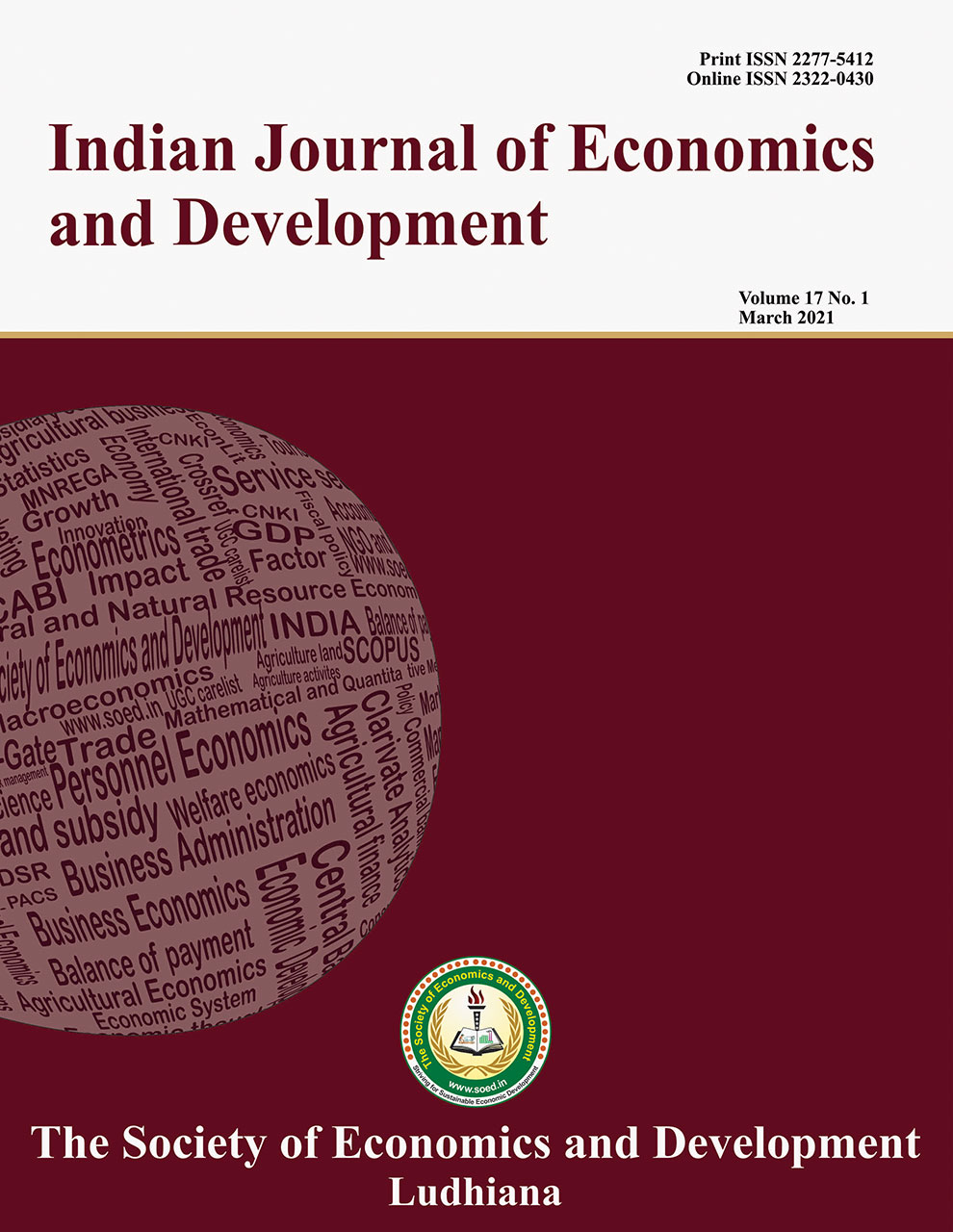Economic Analysis of Water use Efficiency and its Externalities in Areca nut Cultivation

Price: ₹ 500
Author: B.J. Giridhar , H.N. Singh , M.L. Sharma , Virendra Singh , P. Anbukkani , K.V. Praveen and V.R. Renjini
Author Address: ICAR-Indian Agricultural Research Institute, New Delhi-110012 (India) and Govind Ballabh Pant University of Agriculture and Technology, Pantnagar, U.S. Nagar, 263145 (Uttarakhand)
Keywords: Drip irrigation, efficiency, externalities, groundwater, irrigation
JEL Codes: N55, O13, Q15
Abstract
Groundwater mismanagement in India has
resulted in series of issues, including drying up of aquifers, borewell
failures, and loss of crop yields and livelihood to farmers. Efforts are being
made to develop remedial technologies, and drip irrigation is one such promising
technology identified. The economics and efficiency of drip irrigation and
compare it with conventional irrigation based on primary data collected from 80
Areca nut growing farmers was studied from the Tumkur district of Karnataka. It
was found the net income of drip-irrigated farmers was higher than
conventionally irrigated ones. The drip-irrigated farms were economically efficient
in groundwater use than the conventional irrigated farms in Areca nut
production. Groundwater being a common property resource, externalities play an
important role in implementing strategies to save it. Externalities were
captured through annual negative externality costs, which were higher by 2268
for CIFs.
Description
Indian Journal of Economics and Development
Volume 17 No. 4, 2021, 863-870
DOI: https://doi.org/10.35716/IJED/21168
NAAS Score: 5.15
Indexed in Clarivate Analytics (ESCI) of WoS
Indexed in Scopus
UGC Approved



